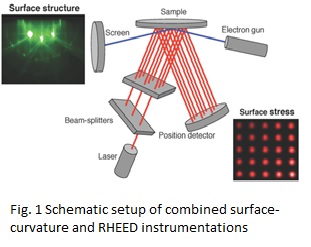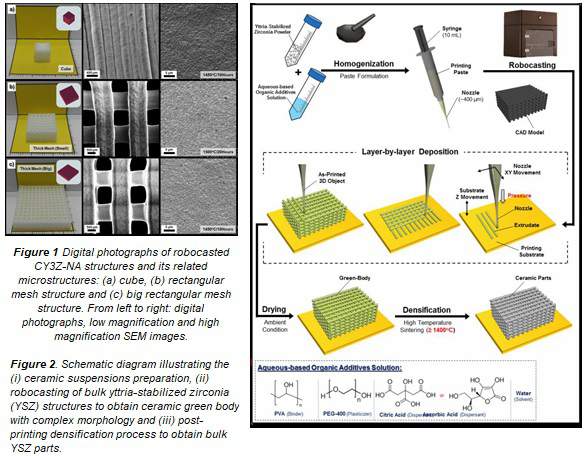Day 1 :
Keynote Forum
Hidehito Asaoka
Japan Atomic Energy Agency, Japan
Keynote: Surface stress in nano-structural formation
Time : 09:30-10:00

Biography:
Hidehito Asaoka focuses on impacts of surface stress on reconstruction and nano-structural formation using molecular beam epitaxy (MBE), X-ray photoelectron sectroscopy (XPS), scanning tunneling microscopy (STM).
Abstract:
It is clear that surface stress and surface morphology have a strong relationship. The surface stress results from the microscopic bonding configuration at the surface. The Si reconstructed surface has unique structure based on dangling bonds reduction and adatom formation. Although the rearrangement of the surface atoms largely reduces the electronic energy of surface by reducing the number of surface dangling bonds, the surface reconstruction increases the surface stress and the surface energy as well. Complex arrangements of the surface atoms, such as adatoms, dimers, and stacking faults are formed on Si(111) 7×7, and pair of pentagons are formed on Si(110) 16×2. Despite the importance of the surface energy of Si, the experimental knowledge on the impacts of reconstruction on the Si surface has been quite limited. We have focused on stress measurements during desorption and adsorption process of hydrogen on the Si(111) 7×7 and Si(110) 16×2 surfaces. In order to obtain information on both the surface stress and the surface structure simultaneously, we have combined the surface-curvature and the reflection high-energy electron-diffraction instrumentations in an identical ultrahigh vacuum system.

Keynote Forum
Ramesh K Agarwal
Washington University in St. Louis, USA
Keynote: Design of metamaterials using transformation physics
Time : 10:00-10:30

Biography:
Professor Ramesh K. Agarwal is the William Palm Professor of Engineering at Washington University in St. Louis. From 1994 to 2001, he was the Sam Bloomfield Distinguished Professor and Executive Director of the National Institute for Aviation Research at Wichita State University in Kansas. From 1978 to 1994, he worked in various scientific and managerial positions at McDonnell Douglas Research Laboratories in St. Louis. He became the Program Director and McDonnell Douglas Fellow in 1990. Dr. Agarwal received Ph.D in Aeronautical Sciences from Stanford University in 1975, M.S. in Aeronautical Engineering from the University of Minnesota in 1969 and B.S. in Mechanical Engineering from Indian Institute of Technology, Kharagpur, India in 1968. He is the author and coauthor of over 600 publications and serves on the editorial board of 20+ journals. He has given many plenary, keynote and invited lectures at various national and international conferences worldwide. He is a Fellow of AAAS, ASME, AIAA, IEEE, SAE and SME.
Abstract:
Metamaterials are rationally designed artificial materials composed of tailored functional building blocks densely packed into an effective (crystalline) material. While metamaterials historically are primarily thought to be associated with negative refractive indices and invisibility cloaking in electromagnetism or optics, it turns out that the simple metamaterial concept also applies to many other areas of physics namely the thermodynamics, classical mechanics (including elastostatics, acoustics, fluid dynamics and elastodynamics) and in principle also to the quantum mechanics. This lecture will review the basic concepts and analogies behind the thermodynamic, acoustic, elastodynamic/elastostatic, and electromagnetic metamaterials and differences among them. It will provide an overview of the theory, the current state of the art and example applications of various types of metamaterials. The review will also discuss the homogeneous as well as inhomogeneous metamaterial architectures designed by coordinate-transformation-based approaches analogous to transformation optics. The application examples will include laminates, thermal cloaks, thermal concentrators and inverters, anisotropic acoustic metamaterials, acoustic free-space and carpet cloaks, and mechanical metamaterials with negative dynamic mass density, negative dynamic bulk modulus, or negative phase velocity. Finally an example of quantum-mechanical matter-wave cloaking will be provided.
Keynote Forum
Jun Ding
National University of Singapore, Singapore
Keynote: Functional structures & devices by additive manufacturing
Time : 10:45-11:15

Biography:
Jun Ding is Professor at Department of Materials Science & Engineering, National University of Singapore. He has been working on functional materials (particularly magnetic materials) over 25 years. His current research is focusing on additive manufacturing (3D printing) with the emphasis of advanced functional and multi-functional devices
Abstract:
Recently, additive manufacturing has attracted a significant attention in the area of materials science and engineering because of its great potential for fabrication of unique structures which cannot or cannot easily made by conventional techniques. Recently, we have built facility of additive manufacturing and fabricated metallic and ceramic structures by different techniques, including selective laser melting and extrusion free-forming. Electrocermaics such as YBCO superconductor, soft and hard magnets have been successfully prepared by additive manufacturing, showing the potential of additive manufacturing in fabrication of functional devices. We have paid particular attention on cellular structures. Some interesting properties have been obtained, such as electronic filter, electrode as water splitting, light-weight applications. This presentation shows some of our recent results to demonstrate fabrication of different functional structures/devices.

Keynote Forum
Sayyad Zahid Qamar
Sultan Qaboos University, Oman
Keynote: Mitigation of major product defects in aluminum extrusion
Time : 11:15-11:45

Biography:
Sayyad Zahid Qamar is currently associated with the Mechanical and Industrial Engineering Department, Sultan Qaboos University, Muscat, Oman. He has worked both as a university academician and a researcher, and as a field engineer (mechanical), during his twenty-five years of professional service. His main research areas are Applied materials and manufacturing; Applied mechanics and design; Reliability engineering; and Engineering education. He has worked on different funded projects in excess of 4 million US dollars. He is currently editing one Book, and one volume of an Encyclopedia, and is serving on the editorial boards of various well-known journals. He is the author of one research monograph (book), two edited book volumes, four book chapters, over 120 publications in refereed international journals and conferences, and 32 technical reports. He has also edited two technical book volumes, and is serving on the editorial boards of various well-known research journals. He has conducted experimental, numerical, analytical, and stochastic studies in the areas of Swelling and inert elastomers; Solid expandable tubulars; Metalforming process, product, and tooling; etc.
Abstract:
In any manufacturing environment, defects resulting in rework or rejection are directly related to product cost and quality, and indirectly linked with process, tooling, and product design. Thorough of product defects is therefore integral to any attempt at improving productivity, efficiency, and quality. Commercial aluminum extrusion is generally a hot working process and consists of a series of different but integrated operations: billet preheating and sizing, die set and container preheating, billet loading and deformation, product sizing and stretching/roll-correction, age hardening, and painting/anodizing. Product defects can be traced back to problems in billet material and preparation, die and die set design and maintenance, process variable aberrations (ram speed, extrusion pressure, container temperature, etc), and post-extrusion treatment (age hardening, painting/anodizing, etc). The current paper describes some major press-area extrusion product defects, traces their origins and causes, and proposes remedial majors for their prevention and mitigation. Sources of information are published articles from research and trade journals, extensive discussions with practicing engineers in regional extrusion plants, and extrusion research conducted over roughly two decades.
Introduction: Aluminum extrusion is primarily a hot working process with high productivity and low rejection rates. From a defects viewpoint, an extruded profile may either be reworked or rejected. Rejected product is highly undesirable as it leads to material and manhour/ processing loss, in addition to the extra cost required to make up for the rejected items. This rejection may be traced to defective billets, faulty or unsuitable tooling, processing anomalies, post-extrusion defects, and surface finishing defects. For ease of quality assurance and costing activities, the entire setup can be divided into three major cost centers: press area (all activities up to and including age hardening furnaces), anodizing, and painting.For both extrusion research and industrial practice, it is important to study product defects: their detailed breakdown, their mechanics-based and activity-based classification, their causes and origins, and their preventive/remedial measures. The current paper briefly describes those extrusion product defects that are commonly encountered in the press area of a commercial enterprise.
Defects included in this review are: Die lines. Black Lines. White lines. Scales or blisters. Pick-up defect. Silicon marks. Runout marks. Graphite lines. Die stop marks. Billet-to-billet weld or transverse weld. Stains/oil patches. Twists and bends. Scratches. Damages. Dents. Hot rub marks. Rough surface. Out of angle. Concave or convex or uneven surface. Off dimensions. Uneven wall thickness.

